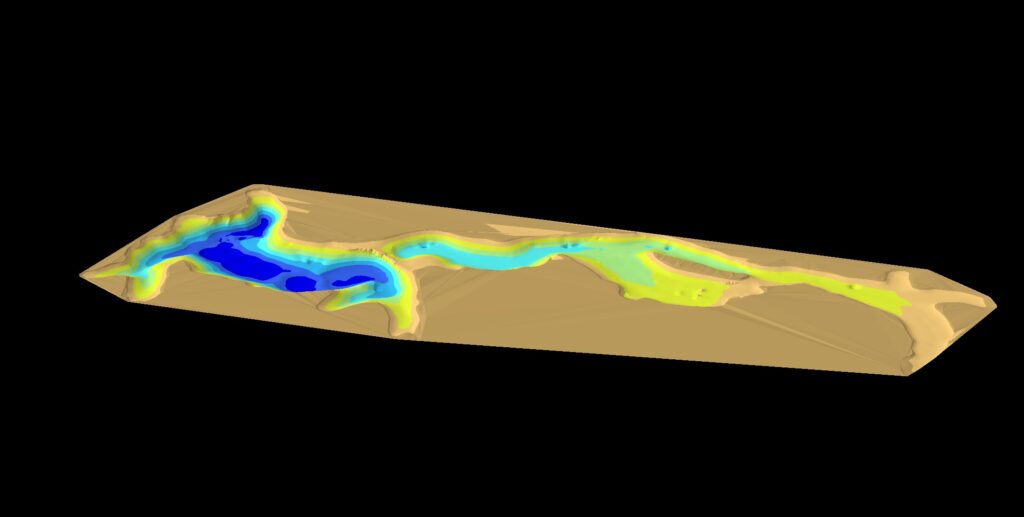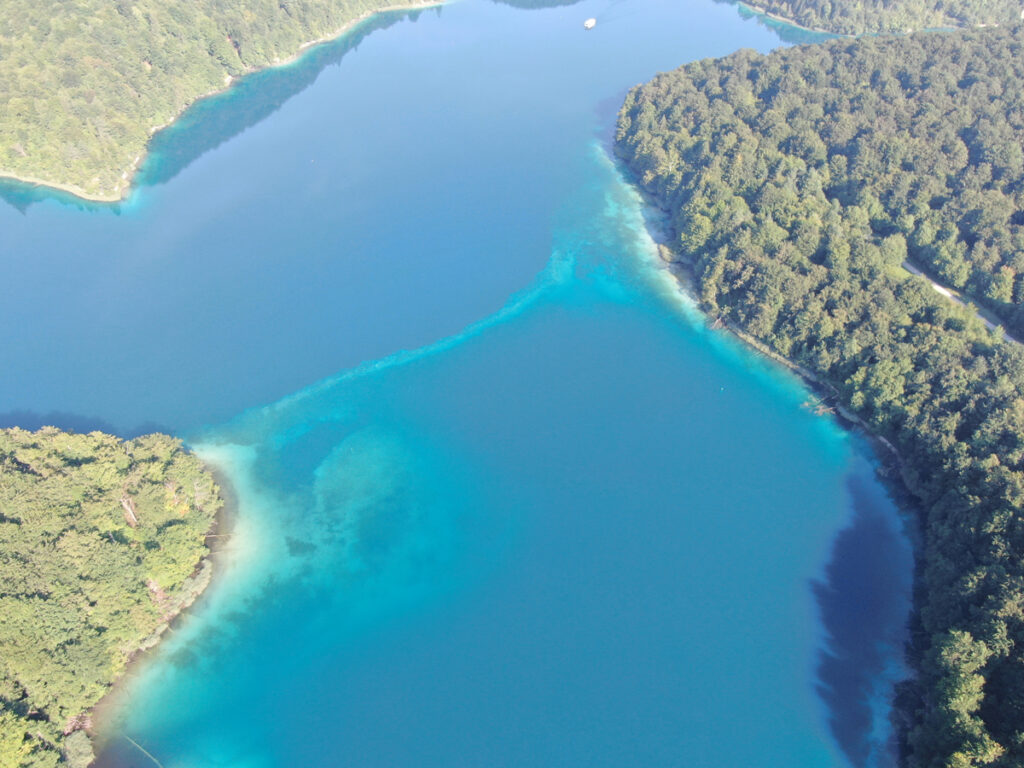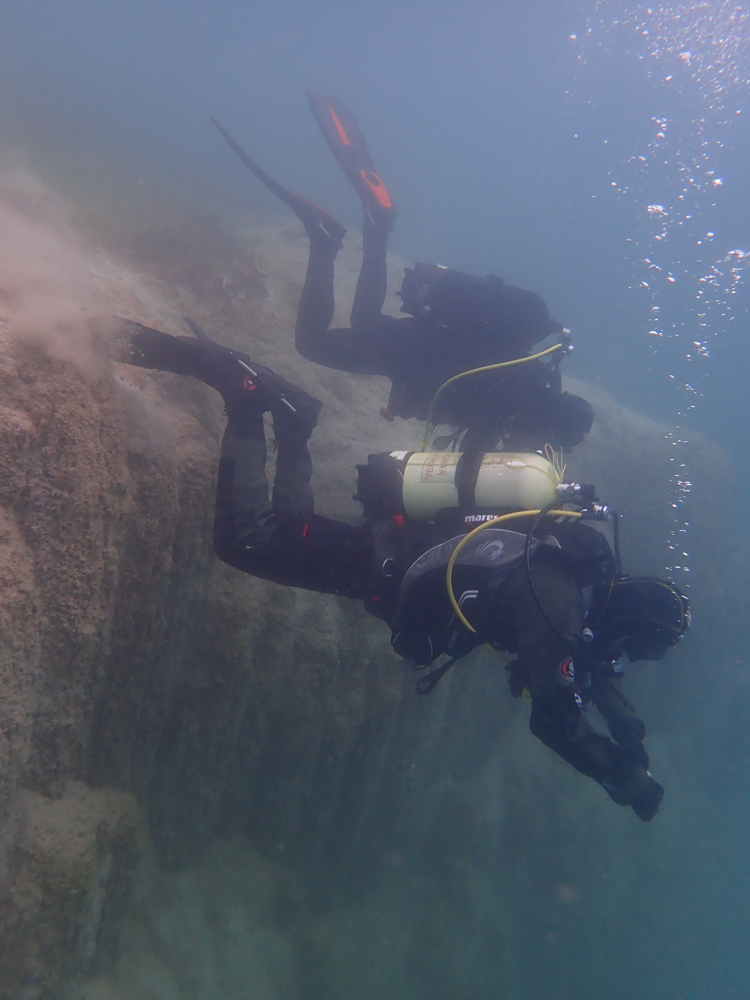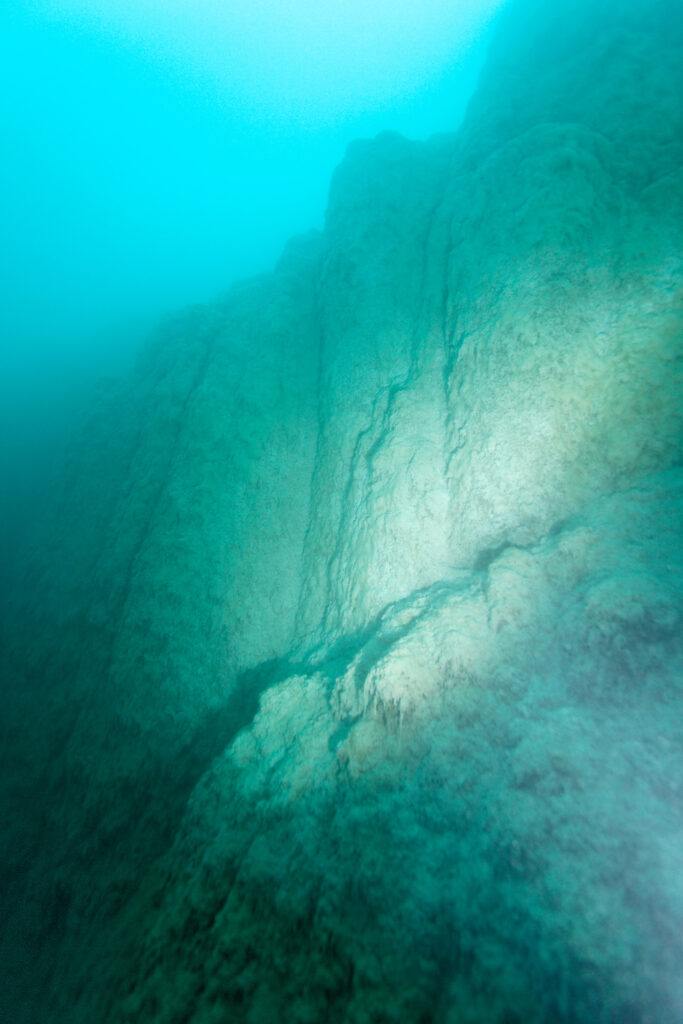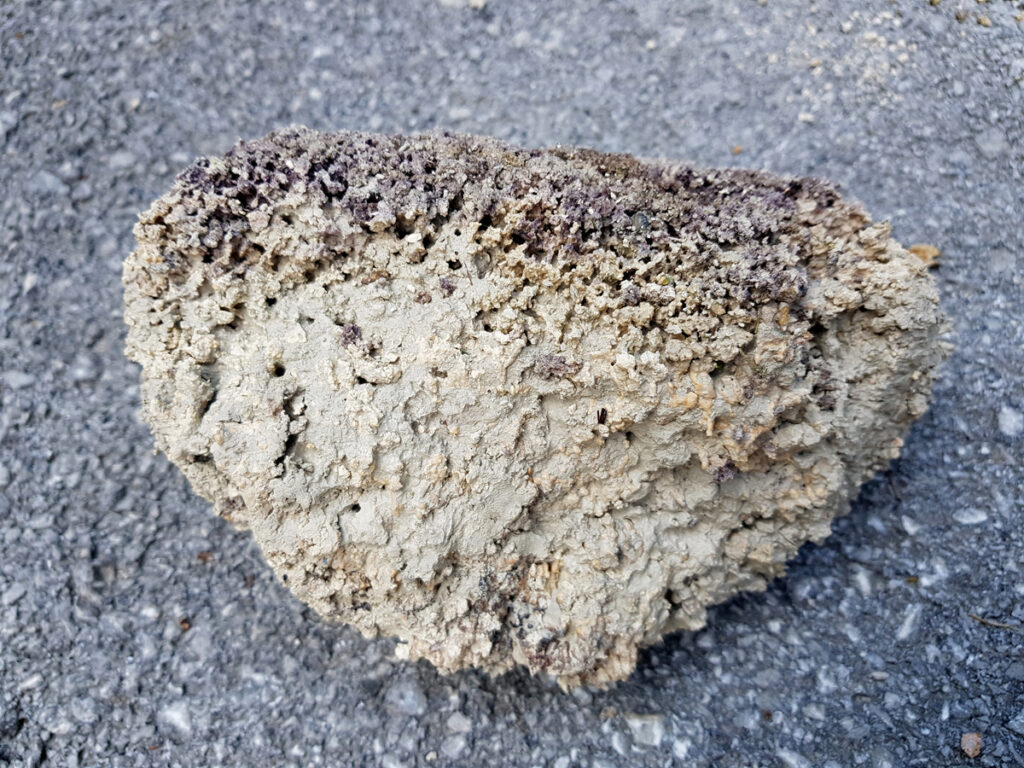The largest of the Plitvice Lakes, Lake Kozjak, is special in many ways. In addition to being the largest (82 ha) and deepest (47 m) lake, it is also the only one on which tourist boats sail, as well as the only one on which an island (Štefanija’s Island) rises. Kozjak forms the border between the Upper and Lower Lakes, as well as the border between Triassic dolomites and Cretaceous limestones. However, this is where the story only begins …
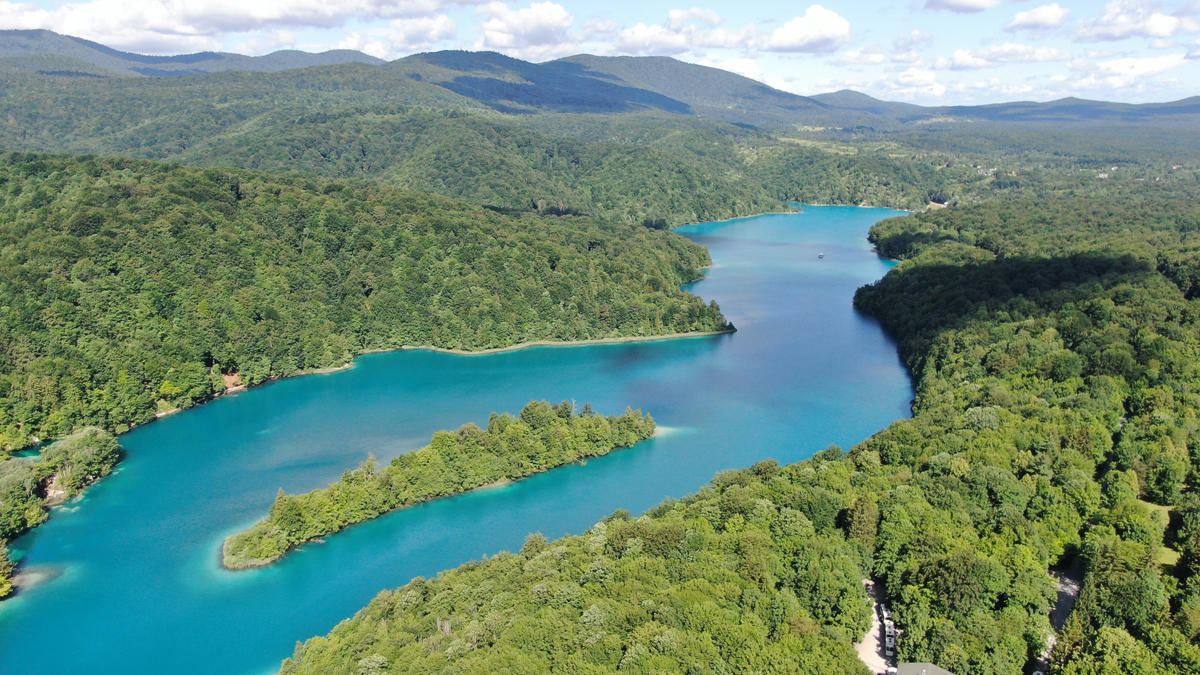
Lake Kozjak has not always looked like this. Until about 400 years ago, there were two lakes on the site of the one lake we see today. These lakes, like all the others in the Plitvice Lakes system, were separated by a tufa barrier. This barrier, about 400 m wide and about 36 m high, is now 6 m below the surface of the water. It can be seen from the panoramic boat on sunny days as a white obstacle in the dark blue depths.
What happened? How did the barrier end up below the surface of the water when we know that they separate lakes, and magnificent cascades flow over them?
There are two possible theories about the sinking of the barrier, and we can say that in fact the more recent theory has replaced the older one. According to the original theory (Petrik, 1958), the downstream barrier, i.e. the barrier at the end of Lake Kozjak (or the former second lake), which we know today as Kozjački mostovi, grew much faster. With the rise of the downstream barrier, the water level of the upstream lake also rose. At one point, 400 years ago, there was a tipping point when the water level rose so high that it covered the upstream barrier. The downstream barrier continued to grow with the same intensity as before, so the water level continued to rise, and thus the submerged barrier was left deeper and deeper under water. Submerged tufa barriers are found not only in Kozjak, but also in Lakes Milanovac, Gradinsko and Prošćansko, and to a lesser extent in other lakes as well.
In the autumn of 2019, dives along the submerged barrier revealed that the original theory may actually be completely incorrect. More specifically, the divers discovered the point where a part of the barrier probably broke off, thus creating a 4 m deep channel. In this way, the downstream barrier on Kozjački mostovi became the only active barrier on the single Lake Kozjak that was then created. The breaking off of the submerged barrier in Lake Kozjak led to major changes in the system. Not only were two lakes formed into one, but the water level of that lake also rose and thus affected the hydrological conditions.
Cracks in tufa barriers are not a common occurrence, but they are not as rare and unusual as one might think. Tufa is very porous, and therefore susceptible to mechanical damage. As a result of extreme weather conditions, such as sudden and great changes in temperature, great oscillations in water levels due to melting snow and heavy rains, a part of the barrier may crack or even break off. In recent times, we have witnessed several barriers breaking off and it has been shown that the results can be drastic. However, the new views created in this way are only a consequence of natural changes.
Read other interesting stories from the Plitvice Lakes National Park

